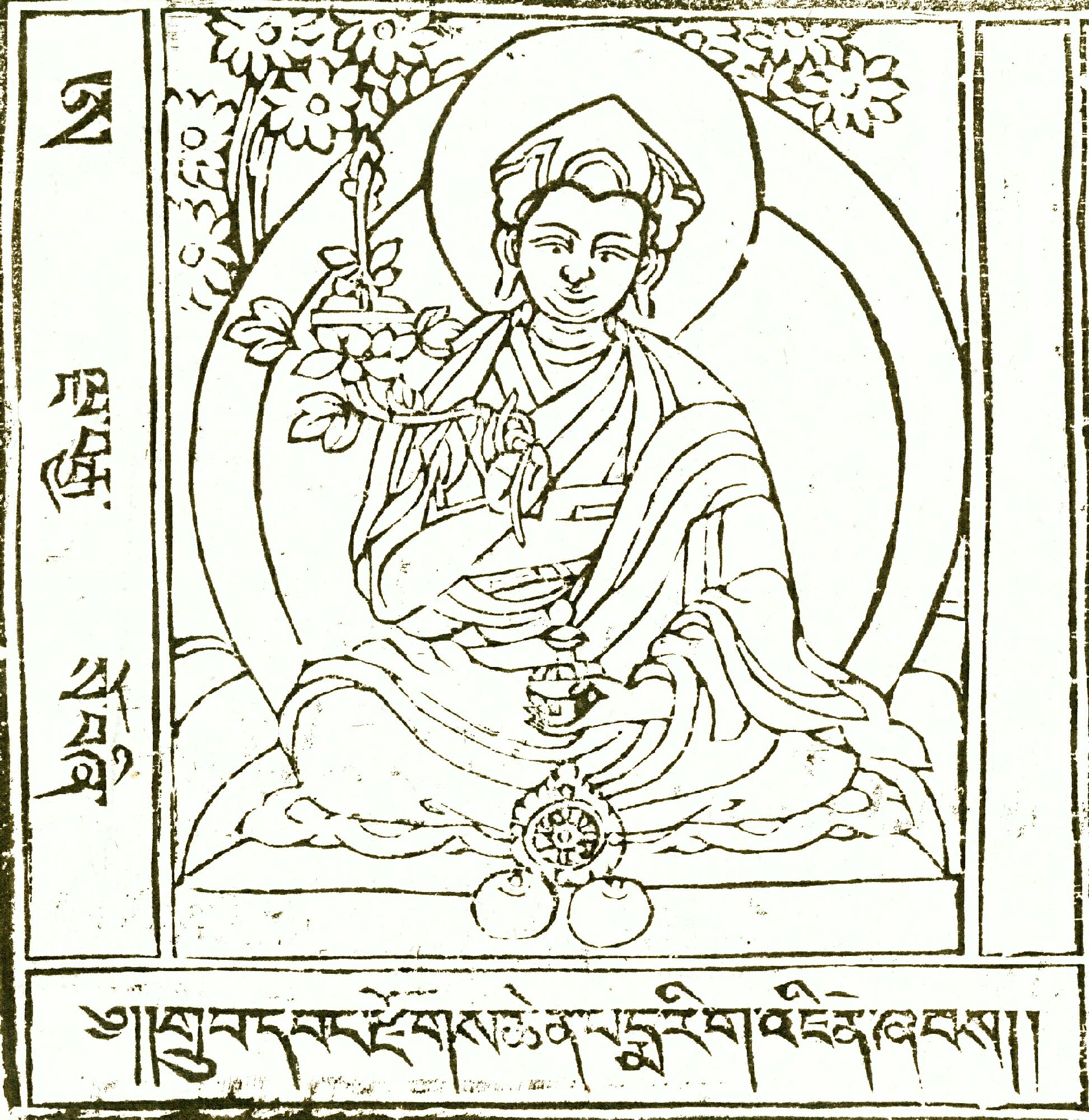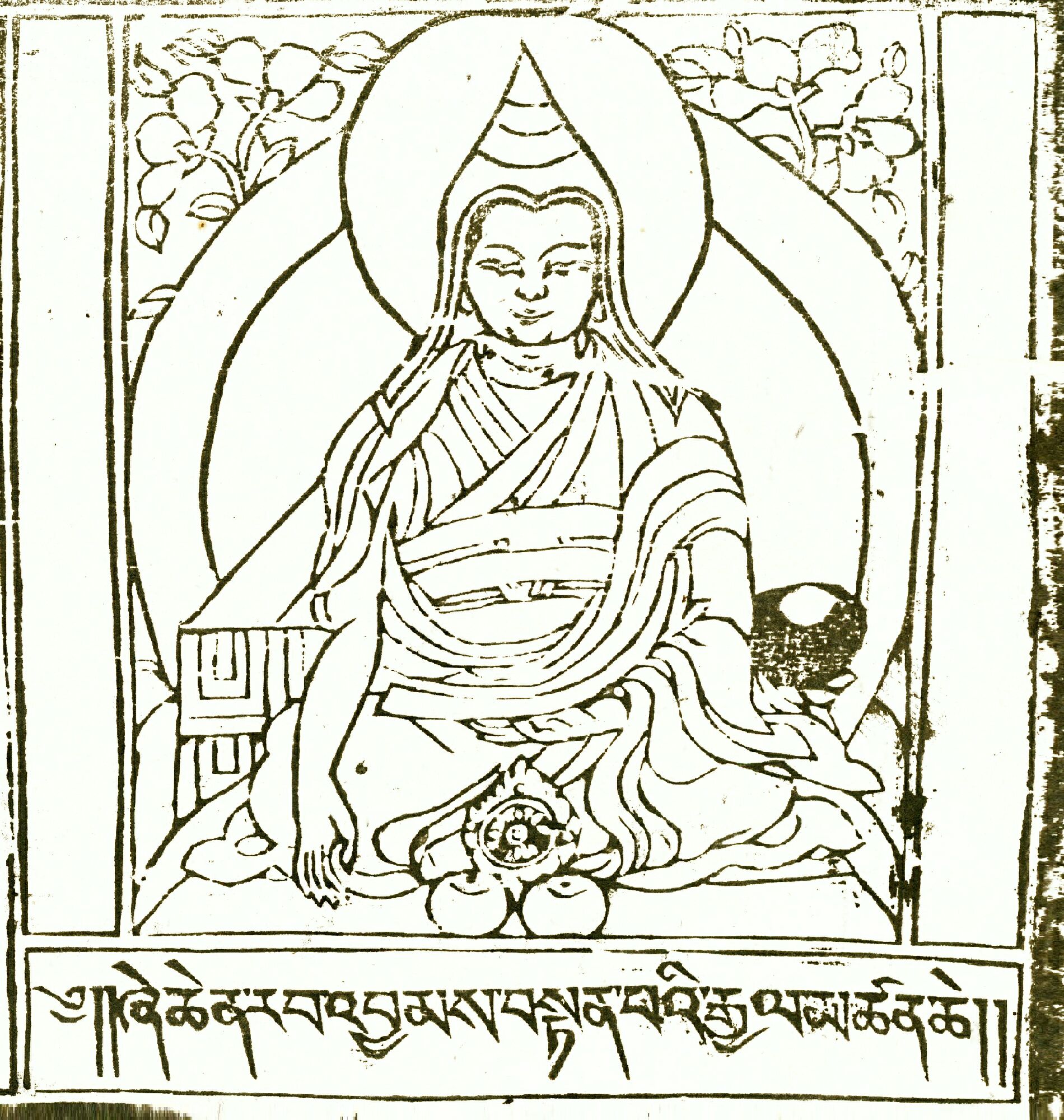Biography and autobiography in Tibet are important sources for both education and inspiration. Tibetans have kept such meticulous records of their teachers that thousands of names are known and discussed in a wide range of biographical material. All these names, all these lives—it can be a little overwhelming. The authors involved in the Treasury of Lives are currently mining the primary sources to provide English-language biographies of every known religious teacher from Tibet and the Himalaya, all of which are organized for easy searching and browsing. Every Tuesday on the Tricycle blog, we will highlight and reflect on important, interesting, eccentric, surprising and beautiful stories found within this rich literary tradition.
Part 1: Padmasambhava
Part 2: Dampa Deshek
Part 3: Nyangrel
Part 4: The Jangter
Nyingma Founders, Part 5: Dzogchen
All but two of the six Nyingma institutions grouped together as the “mother monasteries”—Katok, Dorje Drak, Mindroling, Dzogchen, Zhechen, and Pelyul—were established in the 17th century, a time of considerable Nyingma institution-building. Dzogchen Monastery was founded in 1684 by Pema Rigdzin (1625–1697), posthumously known as the 1st Dzogchen Drubwang. The details of his life illustrate the extensive exchange that occurred between religious traditions of the period, and the important role the 5th Dalai Lama played in creating the Nyingma tradition as it is known today.

Pema Rigdzin was born near Riwoche Monastery to a Nepali artisan and his Tibetan wife. When his father found work at Chamdo Jampa Ling, one of the largest Geluk monasteries in Kham, he was able to study reading and writing there. Some time around the age of 10, he encountered the great Karma Kagyu master Karma Chakme, who became one of his main teachers. Karma Chakme transmitted both treasure and spoken-word teachings to the boy, who spent as many as seven years practicing them. He then journeyed to central Tibet, where he met several important treasure-revealers and teachers, including Dudul Dorje (1615–1672), from whom he received further transmission of Dzogchen. The young practitioner’s quickly growing acumen soon earned him the title “Dzogchenpa from Kham.”
Returning to Kham, Pema Rigdzin encountered the man who would become one of his most important, and controversial, disciples: the treasure revealer Nyima Drakpa (1647–1710), the man behind the revelation that has come to be known as the “Tibetan Book of the Dead.” In 1663, accompanied by Nyima Drakpa, Pema Rigdzin journeyed back to central Tibet, where he gave teachings and transmissions to the 5th Dalai Lama (1617–1682), then at the height of his power. Pema Rigzin toured the region, visiting the great centers of learning and practice and exchanging teachings with luminaries such as Terdak Lingpa (1646–1714) and the 3rd Peling Sungtrul, Tsultrim Dorje (1598–1669).
Although Nyima Drakpa accompanied Pema Rigzin on his teaching rounds, pilgrimages, and retreats, it seems the relationship was rocky. The young disciple occasionally went to Dakpo and Kongpo to receive offerings, and there gained a following and a large ego. Pema Rigdzin, while supporting and authorizing his disciple, was forced to admonish him on numerous occasions for his excesses.

Following a three-year retreat at the sacred mountain of Tsari, Pema Rigdzin separated from Nyima Drakpa and returned to Kham. He took as a disciple a young man named Namkha Osel (d.1726), later to be known as the First Dzogchen Ponlob.
In the 1670s Pema Rigzin again went to central Tibet, where his teachings were in great demand at institutions of multiple traditions—such as the Geluk monasteries of Drepung and Sera. He did a retreat in Yerpa and met a young man named Tenpai Gyeltsen (1650–1704), who became another prominent disciple, known later as the First Zhechen Rabjam.
At Pema Rigzin’s subsequent meeting with the Dalai Lama, the Great Fifth is said to have given him a prophesy from one of his own revelations, which foretold of the establishment of a great center of study and practice in a valley called Rudam. So charged by the Dalai Lama, and further urged by Karma Chakme to establish his center in the Derge region, Pema Rigdzin founded a hermitage called Orgyen Samten Ling in the Rudam Kyitram valley in 1684. Financial support came from both the Fifth Dalai Lama and the king of Derge, Sanggye Tenpa, as well as local clan leaders. The Dzogchen Ponlob and the Zhechen Rabjam assisted the lama in the monastery’s development, as did Nyima Drakpa, whom Pema Rigdzin had to admonish for revealing Bon treasure in the valley. Despite the scolding, Pema Rigdzin offered Nyima Drakpa the abbacy of the monastery, a post the treasure revealer declined.
Successive incarnations of Pema Rigdzin—known as the Dzogchen Drubwang, or simply Dzogchen Tulku—expanded what has come to be known as Dzogchen Monastery, adding temples, hermitages, and colleges, as well as branch monasteries across Kham.
Continue to Part 6: Zhechen Monastery
Thank you for subscribing to Tricycle! As a nonprofit, we depend on readers like you to keep Buddhist teachings and practices widely available.